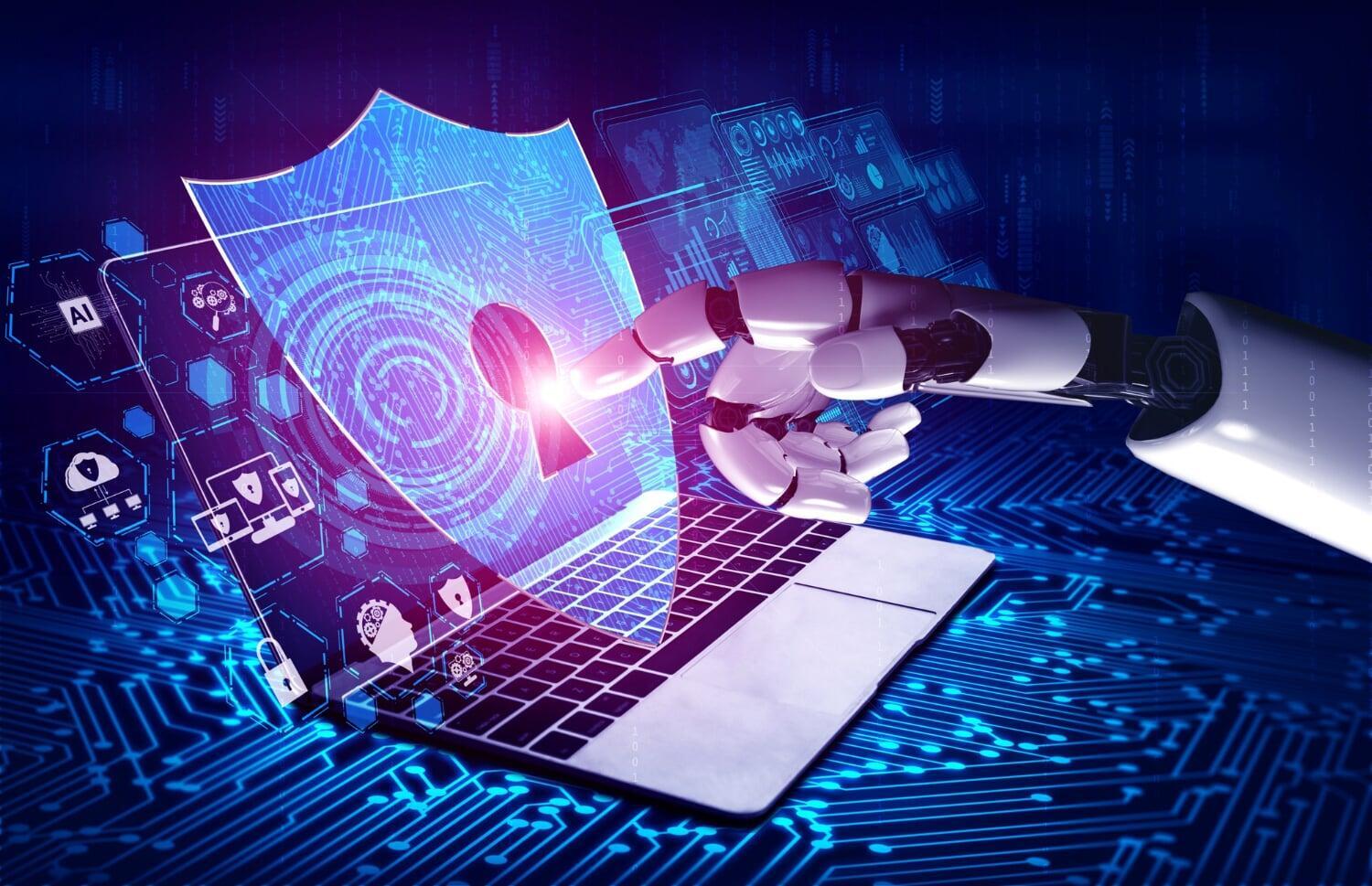The landscape of cybersecurity is evolving at an unprecedented pace and Artificial Intelligence (AI) is at the forefront of this transformation, reshaping how we approach and manage cyber threats. This blog explores how AI is making cybersecurity more pertinent than ever, the benefits of AI-powered cybersecurity tools, and real-world use cases across various industries.
The Evolving Threat Landscape
The Evolving Threat Landscape
Cyber threats are becoming faster, more sophisticated, and increasingly undetectable. AI is a double-edged sword in this context. While it empowers cybersecurity defences, it also equips cybercriminals with advanced tools to launch more complex attacks. AI-driven cyber threats can quickly scale up, making traditional defence mechanisms inadequate.

Faster and More Undetectable Threats
AI enables cybercriminals to automate and enhance their attack strategies. For instance, AI-powered malware can adapt and evolve, making it harder to detect using conventional methods. According to a report by ZDNet, AI-powered attacks are expected to outpace human defences, with ransomware evolving into tools for systemic disruption. This means that attacks can now corrupt sensitive databases, modify financial records, or disrupt entire industries, posing significant risks beyond monetary losses.
Phasing Attacks
Phasing Attacks
Phasing attacks, where cybercriminals gradually infiltrate systems over time, are becoming more difficult to tackle. AI allows attackers to mimic legitimate user behavior, making it challenging for traditional security systems to identify malicious activities. This stealthy approach enables attackers to remain undetected for extended periods, increasing the potential damage.
Scaling Up Attacks
Scaling Up Attacks
AI's ability to process vast amounts of data quickly allows cybercriminals to scale up their attacks. Automated tools can launch simultaneous attacks on multiple targets, overwhelming traditional defence mechanisms. The speed and scale of these attacks necessitate a shift towards AI-powered cybersecurity solutions.

Here are some key benefits of AI in cybersecurity:
Enhanced Threat Detection
Enhanced Threat Detection
AI enhances threat detection by identifying anomalies and patterns that traditional methods might miss. According to Forbes, 80% of organizations believe AI improves security by spotting threats humans would miss. AI-powered systems can analyze network traffic, user behavior, and historical data to detect potential threats in real-time.
Predictive Analytics
Predictive Analytics
Predictive analytics is a game-changer in cybersecurity. AI can predict potential threats by analyzing current and historical data, allowing organizations to take proactive measures. A study by Google Cloud revealed that 66% of AI adopters found that generative AI helps predict zero-day attacks. This capability enables organizations to stay ahead of cybercriminals and mitigate risks before they materialize.
Automated Incident Response
Automated Incident Response
AI automates incident response, reducing reaction time and mitigating damage. AI-powered systems can automatically isolate affected systems, block malicious activities, and initiate recovery processes. This automation reduces the burden on human resources and ensures a swift response to cyber threats. According to ZDNet, AI reduces response time by 50%.
Reducing Human Error
Reducing Human Error
Human error is a significant factor in cybersecurity breaches. AI minimizes human error by automating routine tasks and providing accurate threat assessments. This enhances overall security and reduces the likelihood of breaches caused by human mistakes.
Real-World Use Cases in Various Industries
Real-World Use Cases in Various Industries
AI-powered cybersecurity tools are being adopted across various industries to enhance security and protect sensitive data. Here are some real-world use cases:
1. Financial Services
1. Financial Services
The financial services industry is a prime target for cybercriminals due to the sensitive nature of financial data. AI-powered tools are used to detect fraudulent activities, monitor transactions, and protect customer data. For example, banks use AI to analyze transaction patterns and identify anomalies that may indicate fraud. According to a report by the Financial Times, AI has helped reduce fraudulent transactions by 30% in the financial sector.
2. Healthcare
2. Healthcare
The healthcare industry faces unique cybersecurity challenges due to the sensitive nature of patient data. AI-powered tools are used to protect electronic health records (EHRs), monitor network traffic, and detect potential threats. AI can also predict and prevent ransomware attacks, ensuring the integrity of patient data. A study by Becker's Hospital Review found that AI reduces the risk of data breaches in healthcare by 40%.
3. Manufacturing
3. Manufacturing
Manufacturing companies are increasingly adopting AI-powered cybersecurity tools to protect their industrial control systems (ICS) and operational technology (OT). AI can monitor and analyze data from sensors and devices, detect anomalies, and prevent cyber-attacks on critical infrastructure. According to a report by IDC, AI has improved the security of manufacturing systems by 35%.
4. Retail
4. Retail
The retail industry relies heavily on digital transactions and customer data, making it a target for cybercriminals. AI-powered tools are used to monitor online transactions, detect fraudulent activities, and protect customer information. AI can also predict and prevent cyber-attacks during peak shopping seasons. A study by Gartner revealed that AI reduces the risk of cyber-attacks in the retail sector by 25%.
Conclusion
Conclusion
AI is transforming cybersecurity by enhancing threat detection, predictive analytics, and automated incident response. As cyber threats become faster, more undetectable, and scalable, AI-powered cybersecurity tools are essential for protecting sensitive data and ensuring the integrity of systems. Real-world use cases in financial services, healthcare, manufacturing, and retail demonstrate the effectiveness of AI in mitigating cyber risks. Embracing AI-driven cybersecurity solutions is crucial for organizations to stay ahead of evolving cyber threats and safeguard their digital assets.

